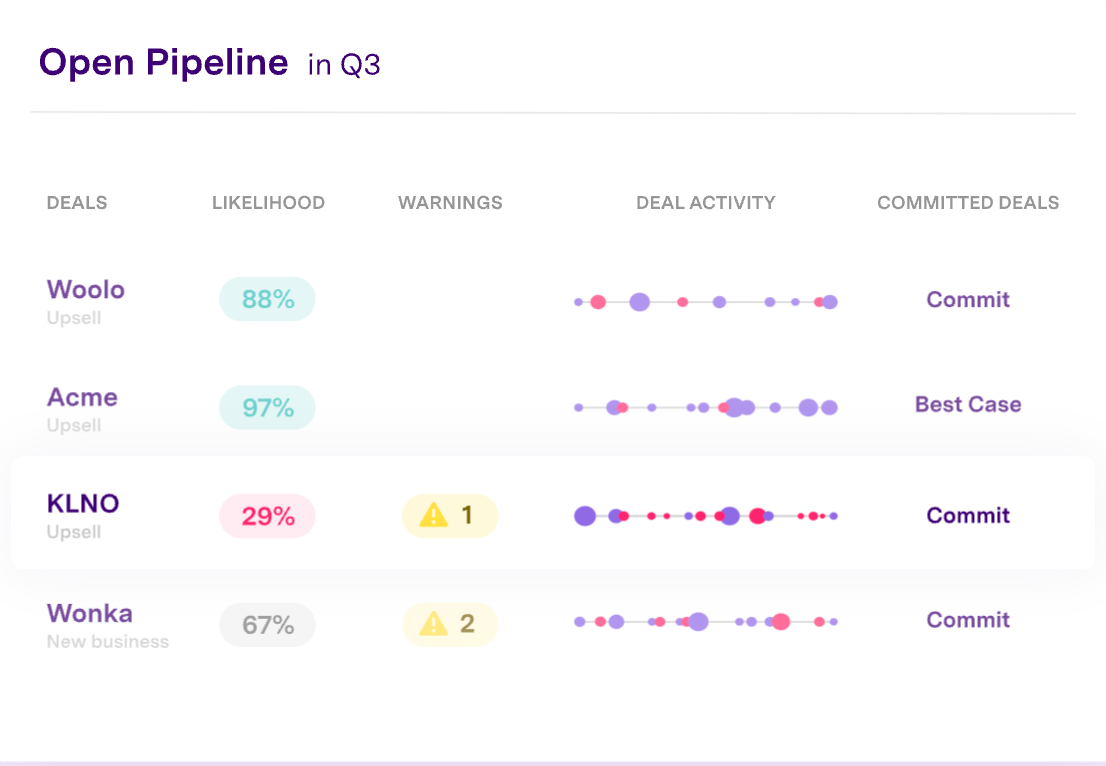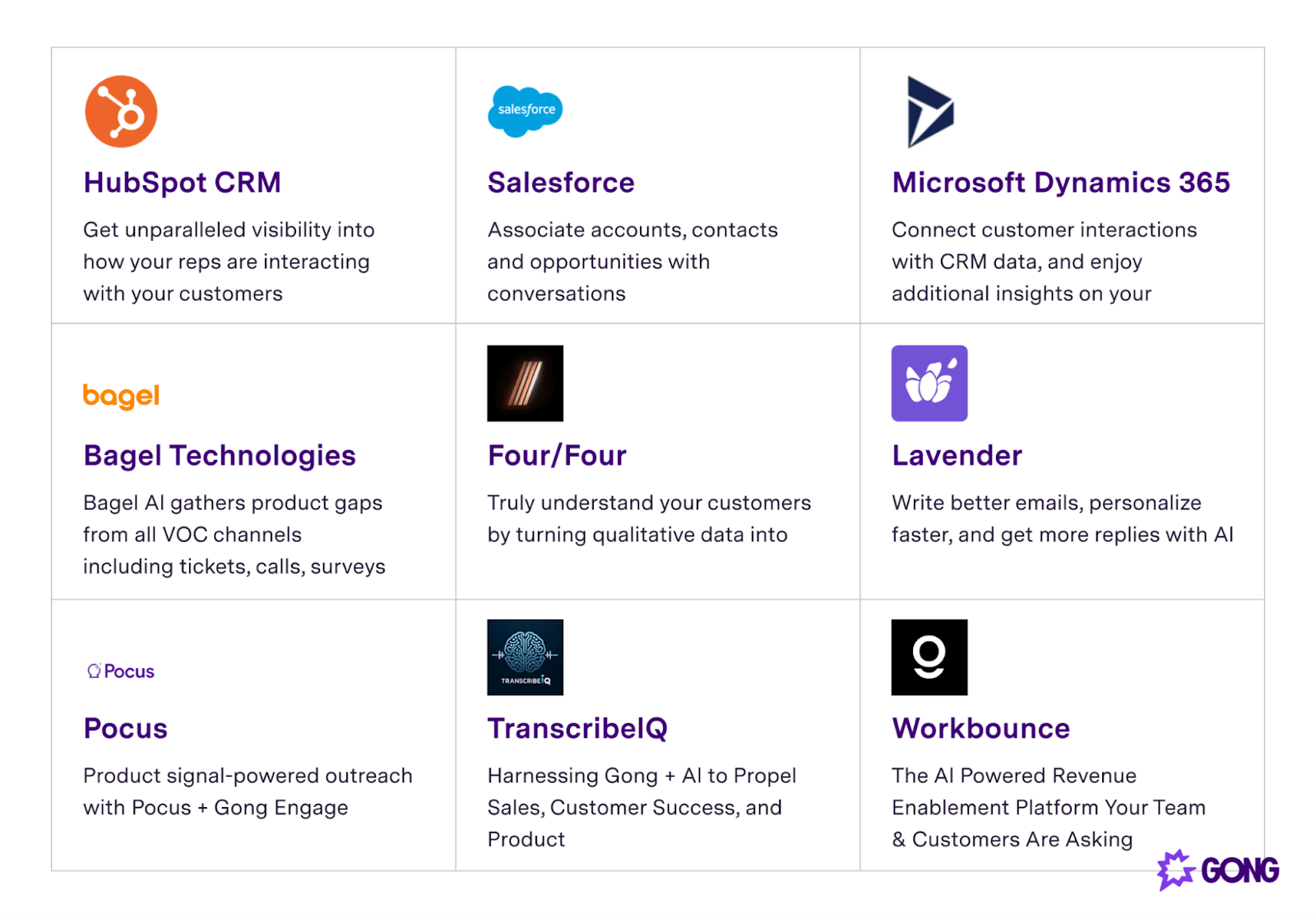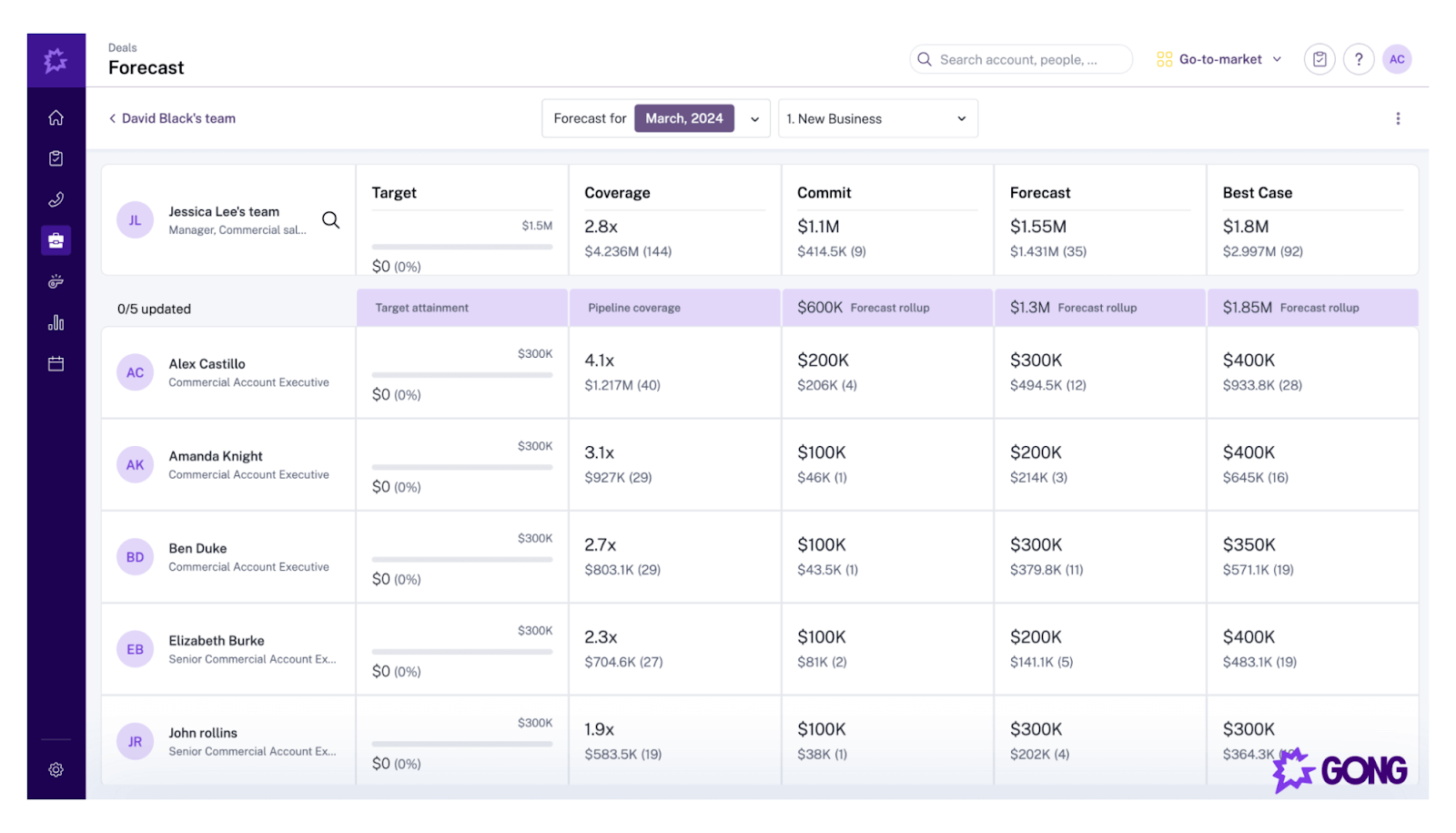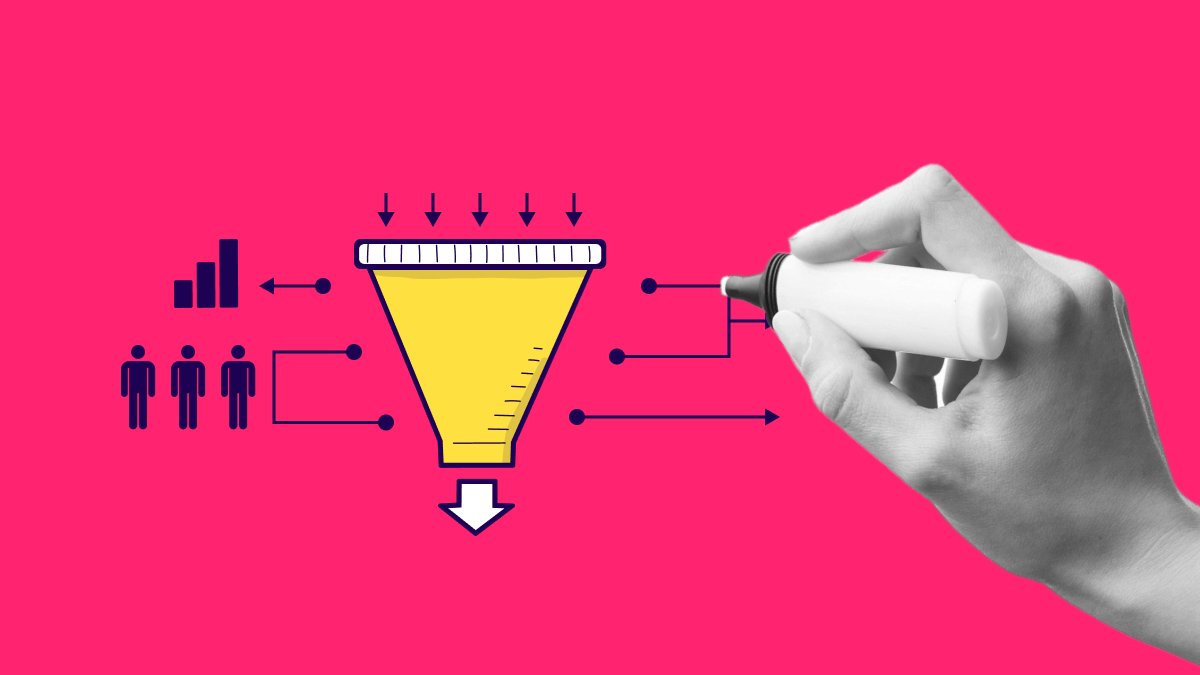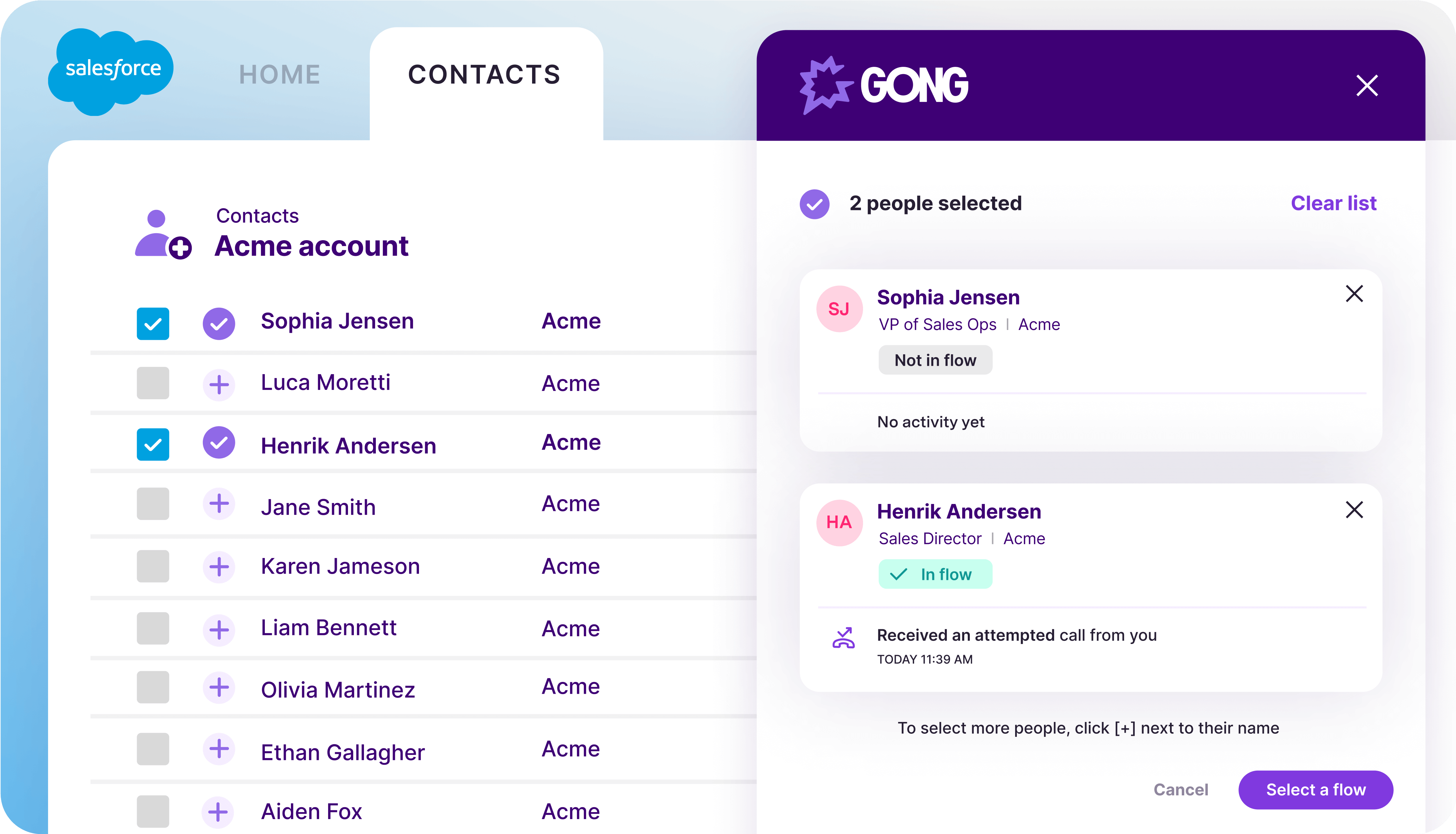Complete guide to choosing sales lead management software
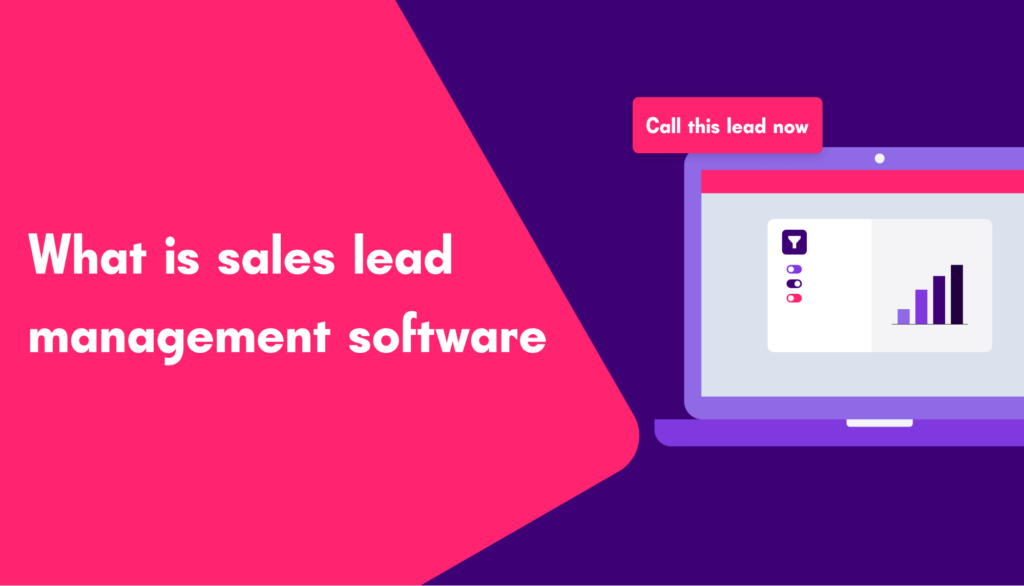
Prioritizing leads and keeping track of prospect interactions takes constant effort.
Losing visibility into your sales pipeline can cost you valuable opportunities. With disconnected or manual lead-tracking systems, miscommunication and confusion become everyday occurrences.
Sales lead management software can solve this problem.
These tools help sales teams track, nurture, and convert prospects. They offer visibility into your pipeline so you can streamline and improve lead interactions.
In this guide, we’ll explore sales lead management software, its benefits, and important features to look for when choosing such a solution.
What is sales lead management software?
Sales lead management software helps you track and manage qualified sales leads.
It keeps your sales pipeline organized and prioritized so you can see where your team needs to focus. From a customer’s first email to closing a deal, sales lead management software helps you and your reps turn promising leads into loyal customers.
Without it, managing leads can feel overwhelming due to several challenges:
- Struggling to spot qualified leads
- Wasting time on mundane tasks like updating contact data and sales spreadsheets
- Losing track of where leads are in the sales funnel, making it harder to forecast sales
- Miscommunicating with prospective customers based on incorrect information
Sales lead management software helps you gain clarity. It shows you where a potential customer is in the funnel and what to do next to improve your chance of closing deals.
Many of its benefits come from its automation capabilities. Automated workflows speed up decision-making and routine tasks, making sales activities feel easier and saving time and energy.
But don’t confuse these solutions with customer relationship management (CRM) platforms.
CRMs are end-to-end solutions that manage customer relationships before, during, and after the sale. They’re full-spectrum tools that cover all three phases.
In contrast, sales lead management tools focus solely on selling to potential customers. They’re all about finding promising leads, nurturing them, and converting them.
Sales lead management software works to identify leads that have the highest chance of converting. It guides this low-hanging fruit down the sales funnel, from interest toward conversion.
What to look for when choosing sales lead management software
Sales lead management software can completely transform the way you manage leads … but only if you pick the right one for your business needs.
Here are the top features to look for to help you convert promising prospects into loyal customers:
Lead capture and scoring tools
Improving lead qualification can boost your pipeline by 300 percent, but figuring out which leads have the most potential can be challenging.
Effective lead capture and scoring are the keys to working this out. That’s why you need lead management software to collect leads and prioritize them based on their likelihood to convert.
It can pull leads from a wide variety of sources, such as:
- Web forms
- Social media
- Pop-ups
- Landing pages
Once it gathers that data, your lead scoring tool will assign numeric values or color codes to signify a deal or prospect’s urgency, value, or conversion likelihood. This helps you focus your attention on the most promising prospects.
Lead nurturing tools
Once you understand which leads to prioritize, you need to guide them through the sales funnel. This is where lead nurturing tools come into play.
These tools help you personalize marketing content to target prospective customers’ needs and desires. With customizable templates and personalization features, lead nurturing tools tailor emails, SMS, and content to help your team build strong customer relationships.
Automation features, like pre-built workflows and automated follow-ups, ensure that your reps reach out to leads in a timely fashion.
This not only saves valuable time, it also means you don’t miss opportunities to bring prospects closer to a deal.
Lead management automation
Automated lead management reduces your team’s manual workload by automating repetitive data entry tasks and approvals.
When you eliminate mundane tasks, sales reps can focus on more complex activities, like selling.
Pipeline visualization tools
Pipeline visualization tools give you a clear view of your sales process. They offer displays like Kanban boards or funnels to break down the sales cycle. This shows you where each lead is within the process, highlighting bottlenecks that stop leads from moving forward.
Pipeline visualizations help you track a deal’s progress and identify areas for improvement.
With this information clearly organized, it’s easier to understand the potential value of the deals in your pipeline. You can see what’s likely to close and what you need to do to seal the deal.
As Rahim Fazal, Co-Founder of SV Academy, puts it,
Pretty much everyone that we talked to said that pipeline data was a great constraint for them, and they could quantify it in terms of the value of every dollar in the pipeline to your uplift in valuation and multiples.
Rahim Fazal, Co-Founder of SV Academy
Gong Reveal Podcast: From rap artist to Silicon Valley CEO
Reporting and analytics
A better understanding of your sales data can increase your win rate by 34 percent. With effective reporting and analytics tools, you’ll better understand your team’s performance and adjust your sales tactics accordingly to convert more prospects.
Your analytics dashboard tracks critical metrics like lead generation, conversions, and revenue. Presenting this sales data in charts, graphs, and tables makes it easy to extract valuable insights and understand how they affect sales performance.
With this information, you can spot trends and patterns that help you devise better sales strategies.
Team collaboration features
To work together effectively, sales teams need collaboration tools that foster teamwork.
Look for a platform that includes shared calendars, team dashboards, scorecard comments, and call snippets to simplify cross-departmental collaboration and help everyone work toward the same goals.
This way, sales and marketing can get aligned on insights, coordinate efforts, and streamline their workflows.
CRM integration
Connecting your CRM to your sales lead management tool gives you a more holistic view of your team’s customer interactions and sales efforts.
With a 360° view of your sales data, you’ll have a comprehensive picture of the customer journey — from the moment they show interest until they become loyal customers. Understanding what makes customers tick makes it easier to build lasting relationships once they convert.
What are the benefits of sales lead management tools?
Lead management software helps you build customer relationships and boost sales productivity. If you’re looking for ways to meet your sales goals, here’s how lead management tools can help:
Centralized lead organization
Sales lead management tools eliminate the need for tedious spreadsheets and manual tracking. Instead, a single platform stores and manages all your team’s customer interactions and contact details.
This improves data accuracy and makes it easier to find and manage contacts. Team members can access information quickly, simplifying collaboration and speeding up the account handoff process.
Better prioritization
With more accurate lead scoring, reps know where to focus their attention. Lead scores indicate which prospects have the highest value, urgency, or chance of converting.
It’s far easier to raise conversion rates when you focus on the leads most likely to close.
Easier nurturing
It’s also easier to nurture leads when the process is personalized and automated.
Targeted content engages customers on a personal level, while automatic follow-ups ensure consistency in communication.
Altogether, this improves conversions and shortens sales cycles. It also saves the time and effort needed to create tailored messaging by hand.
Plus, this solution is scalable. A lead management platform can handle increasing volumes of sales communications without sacrificing quality.
More efficient sales processes
Not only does automation save time and streamline workflows, it also lowers the risk of human error — and the need to correct mistakes. All of these factors increase your sales team’s efficiency.
There’s also less chance of miscommunication and missed opportunities since automation handles these tasks at the right time, thus also contributing to greater productivity and efficiency.
Improved pipeline visibility
With better pipeline visibility, sales teams can easily track every deal’s progress and pinpoint systemic bottlenecks.
This improved visibility also helps you better understand how your market is evolving and how to grow your pipeline. You can forecast sales more accurately and gain insights that shape future strategies.
Enhanced team collaboration
Tools that enable sharing and collaboration help sales teams align their efforts at both the departmental and organizational levels.
If everyone can access the information they need, they can make sure they’re on the same page. This unified view makes for a more cohesive workflow and a better experience for the prospect.
Improved decision-making
With data-driven insights, you can improve strategic decisions about your sales process. Your analytics and reporting dashboard will show you patterns based on real-time data.
This helps you make smarter, more informed choices about how you allocate resources and overcome hurdles in your sales funnel.
Scalability
Automated workflows allow you to scale activities such as lead capture, nurture, and management without hiring more sales reps. Instead, lead management software can handle large lead volumes of deal data and capitalize on sales opportunities in real time.
Better customer relationships
With tailored lead nurturing and automated workflows, you can build more trust through consistent and personalized customer relationships.
By making sure leads feel valued and understood, you’ll boost their satisfaction and build lasting connections.
What challenges arise when you’re implementing lead management tools?
Lead management solutions can help you improve your sales operations. That said, there are a few things you should consider to ensure that implementation goes smoothly:
Data quality
To get a complete picture of your sales cycles, you’ll need data from multiple sources. This might include data from your CRM software, marketing automation tools, and various spreadsheets.
Making sure this data is consistent, complete, and accurate is a massive job — if you’re doing it manually. If it’s not clean, duplicates, errors, and missing data can result in skewed insights.
Nobody has time to cleanse, standardize, and validate their data, which is why a unified platform that does all of that for you is a great solution.
Adoption and training
Resistance to change often comes down to sales reps not understanding the true value behind the change. Or they might find the switch complicated, both of which will lead to low adoption rates that negatively impact your new approach.
Comprehensive training helps sales reps adopt and use new tools effectively. Clear guidance boosts productivity and eases implementation while reinforcing messaging about the tool’s overall value.
Integration
Pick a sales lead management solution that integrates easily with other tools and systems you already have in place.
Without native integrations or APIs, combining tools becomes complex. Choose a solution that you know will integrate easily so you avoid tricky setups and disjointed workflows.
Costs
Your new solution needs to fit your budget and provide a clear return on investment (ROI).
Look out for hidden charges and unexpected costs that can increase the price. Remember to factor in ongoing maintenance fees and support costs when determining the tool’s price.
Analytics
Proper analytics are essential to tracking your sales performance. However, choosing which metrics to follow and configuring analytics requires time and skill.
If you don’t have someone on your team with the expertise to do this, look for a solution with a simple, straightforward, and preferably out-of-the-box analytics setup.
How Revenue AI makes it easy to track and manage leads
Revenue AI platforms are potent solutions for harvesting data insights and streamlining sales. With a toolbox of features that maximize sales intelligence, teams can prevent opportunities from slipping through the cracks.
1. Prospecting and lead scoring
AI-powered lead-scoring algorithms highlight and prioritize the most promising leads.
For instance, Gong AI uses more than 300 buying signals to identify high-potential leads so sales leaders know which deals are most likely to convert. It then provides actionable insights your team can use to move deals forward. This means your team will be better equipped to target their efforts, saving time and resources.
2. Lead intelligence
Real-time lead intelligence can analyze 100 percent of customer interactions to help teams identify the most viable leads and behaviors that result in the best deal outcomes.
Gong Smart Trackers go beyond keywords to uncover information that matters. They dive deep into every email, call, and video conference, searching for topics, buyer intent, relationship dynamics, and more.
3. AI-powered lead nurturing
Today’s intelligent revenue tools don’t just show you what to do; they tell you how to do it.
Using AI in sales, teams can understand the context of their buyer interactions and get real-time recommendations for the best next steps.
They can also automatically generate personalized and relevant content tailored to specific accounts, deals, and contacts within seconds.
4. Pipeline management
Real-time insights and a bird’s-eye view of everything in your pipeline mean you’re in a better position to manage your team’s deals. You can easily monitor how deals progress and quickly spot slow-moving or stalled deals that need attention.
Revenue AI systems also automatically flag bottlenecks to simplify your pipeline management. They also automate workflows so everything runs smoothly.
5. Sales forecasting
Gong Forecast uses more than 300 unique buying signals to deliver forecasts that are 20 percent more accurate than conventional CRM predictions.
With this added precision, sales teams can make better decisions about how to improve sales processes and where to focus their time.
6. Personalized sales coaching
Gong offers managers actionable, personalized suggestions on where each rep can improve their sales strategies.
It also delivers feedback on real customer interactions and deal prioritization so your sales reps focus on the right opportunities.
Manage leads effortlessly to drive more conversions
Sales lead management software makes it much easier to track and manage prospects.
Its automated workflows eliminate inefficiencies, while its dashboards and analytics improve pipeline visibility. With lead prioritization and automated nurturing, you can engage the right prospects at the right time in the right way to drive conversions and build relationships.
To truly maximize your sales process, you need an AI-backed, data-driven platform — one that powers insights using accurate, unbiased data processing that streamlines your decision-making and creates hyper-focused sales funnels. You need Gong’s Revenue AI Platform.
Ready to learn about the leading sales lead management software? Speak to a Gong expert today.
- What is sales lead management software?
- What to look for when choosing sales lead management software
- What are the benefits of sales lead management tools?
- What challenges arise when you’re implementing lead management tools?
- How Revenue AI makes it easy to track and manage leads
- Manage leads effortlessly to drive more conversions


